

| Return to Index |
|
Paper 72 The Dancing Days of Lady Sarah Spencer (1787-1870)Contributed by Paul Cooper, Research Editor [Published - 22nd September 2024]Lady Sarah Spencer (1787-1870) turned eighteen in the year 1805, a portrait of Sarah can be seen in Figure 1. She would become a prominent socialite over the following few years and danced at numerous society balls. She married William Lyttelton (1782-1837) in 1813 and later acquired the title Baroness Lyttelton. A collection of her private letters was published in 1912 by her great granddaughter, these letters contain occasional personal references to the balls that she attended as a young lady. In this paper we'll consider those anecdotes and combine them with reports of the same events from elsewhere, the result should offer a slightly different insight into the privileged life of an aristocratic young lady around the start of the 19th century.  Figure 1. Lady Sarah Spencer, an oil painting by John Jackson (1778-1831). Image courtesy of Christies.
Figure 1. Lady Sarah Spencer, an oil painting by John Jackson (1778-1831). Image courtesy of Christies.
If you'd like to read the letters for yourself you can find them in the 1912 Correspondence of Sarah Spencer, Lady Lyttelton, 1787-1870 as edited by Her Great-Granddaughter, the Hon Mrs Hugh Wyndham, a copy of which is available on-line courtesy of the Hathi Trust.
The Spencer FamilyThe title of Earl Spencer was created in the British Peerage in 1765 for Sarah's grandfather, John Spencer (1734-1783). The title would then pass to her father, George Spencer (1758-1834), George served as the Home Secretary of Great Britain between 1806 and 1807 in Lord Grenville's government. George's sister (and Sarah's aunt) Lady Georgiana Spencer married the Duke of Devonshire in 1774, she became the fabled society hostess Lady Georgiana Cavendish, Duchess of Devonshire (1757-1806). George married Lady Lavinia Bingham (1762-1831) in 1782 and the couple went on to have nine children together. Their first child was John Spencer (1782-1845 who would go on to become the third Earl Spencer, five years later Sarah would be their second child. The next surviving child would be Sarah's younger brother Robert Spencer (1791-1830), it was to Robert that many of Sarah's published letters were written. A further sibling of note is Frederick Spencer (1798-1857) who would later become the 4th Earl, it was through Frederick's line that the family's most famous descendent would be born: Lady Diana Spencer (1961-1997). Diana of course is better known to posterity as being the Princess of Wales, she was the first wife of King Charles III. Sarah's branch of the Spencer family were also closely related to the Dukes of Marlborough (who later changed their surname from Spencer to Churchill), they were descended through John Spencer's uncle; the celebrated Winston Churchill (1874-1965) was a descendant of this second branch of the family. The Spencers were not just a well connected aristocratic family, they were also very wealthy. The family estate at Althorp House in Northamptonshire housed what is believed to have been one of the largest private libraries in Europe, at least at that time. Lady Sarah grew up in what was essentially a palace, the same family home that nearly two centuries later would be the childhood home of Princess Diana. The family would later amass significant debts, the third Earl (Sarah's older brother John Spencer) is reported to have inherited a debt of £500,000 in 1834 along with the title; yet during Lady Sarah's time at Althorp the family were amongst the most prominent in the whole of Britain. Aside: Enthusiasts of Regency era clothing may be interested to know that the popularspencerjacket that was worn by fashionable ladies across the early 19th century was named in reference to Lady Sarah's father, Earl Spencer. Lady Sarah married Sir William Henry Lyttelton (1782-1837) in 1813 and they would go on to have five children together. They inherited the Barony of Lyttelton in 1828, thereafter she was styled as Baroness Lyttelton. Lady Sarah was widowed in 1837, shortly afterwards she was appointed Lady of the Bedchamber to Queen Victoria (1819-1901). She would go on to be appointed governess to Victoria's royal children in 1843. She retired from this role in 1850 and quietly lived with her family for a further 20 years. If you'd like to read more of Sarah's life I'd encourage you to take a look at the collection of letters, many of them were written at later dates and offer interesting insights into the times through which she lived. For this paper we'll concentrate on the few years of Lady Sarah's youth up to and including her marriage in 1813.
Presentation to the Queen, May 1805
Lady Sarah turned eighteen in July of the year 1805. The Morning Post newspaper for the 4th of May 1805 noted 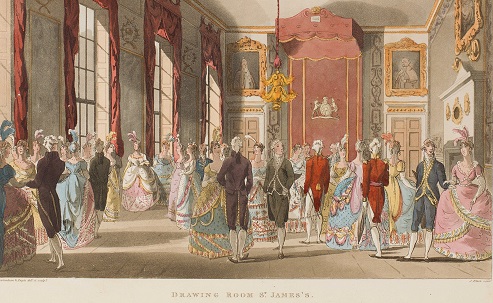 Figure 2. A Drawing Room at St James's Palace in 1809. From volume 3 of Ackermann's Microcosm of London
Figure 2. A Drawing Room at St James's Palace in 1809. From volume 3 of Ackermann's Microcosm of London
Gentlemen are all presented first to his majesty at the levee, and to her majesty at the following drawing room: they are generally presented by their nearest relation, who gives a card with their name, and the occasion of their being presented written upon it...Ladies were presented to the king at the same drawing-room, but before they were presented to her majesty; but since the king has gone so much seldomer to court, they have been presented first to the queen at a common drawing-room, and to the king at the birth-day following;...To her majesty the ceremony of presentation for ladies is different according to their rank: all under the rank of right honourable kiss the queen's hand, making so low a courtesy as to have almost the appearance of kneeling; she salutes those who have that rank, though they equally have their glove off. Lamb went on to explain some of the ceremonial process, the activity of the royal attendants and the princesses, which doors were used, how the three main rooms were situated and so forth. Many people would be presented at the same time, both men and women, for various different reasons. Several newspapers reported on the Drawing Room event at which Lady Sarah Spencer was presented, including for example The Oracle and Daily Advertiser for the 17th of May 1805, they wrote under the title of The Queen's Drawing Room that: Yesterday, at two o'clock, Her Majesty held a Drawing-room at St James's Palace, which was attended by the Princesses Elizabeth, Mary, Sophia, and Amelia; the Lord Chancellor, the Archbishop of Tuam, the Secretaries of State, their Excellencies the Danish, Russian, Sardinian, Swedish, Neapolitan, and Portuguese Ambassadors; the Lord Mayor of London; there were also present the Dean of Worcester, the Lord Chief Baron McDonald, and a numerous assemblage of the Nobility and Gentry. The following numerous Presentations to Her Majesty took place:  Figure 3. Inconveniences of a Crowded Drawing Room, 1818. Image courtesy of Yale University Library.
Figure 3. Inconveniences of a Crowded Drawing Room, 1818. Image courtesy of Yale University Library.
Lady Sarah was the first person named as having been presented among the long list of attendees. It was evidently a packed gathering with a large host of the aristocracy in attendance. Lady Sarah's aunt the Duchess of Devonshire was also in attendance along with her daughter (and Lady Sarah's cousin) Lady Georgina Cavendish. Both the Spencer and Devonshire parties are described as having been attended by their liveried footmen. On the same day that the newspapers wrote of the event Lady Sarah wrote a personal letter to her Grandmother (Georgiana Spencer (1737-1814)) describing her own recollections of what had happened at the presentation: My Dear Grandmama, I take the earliest opportunity to answer your inquiries about the ceremony, which, thank Heaven, I may now say is over, and even better over then I expected, for I did not quite knock the Queen down, nor is Mama made ill by the fuss; both of which things I had made up my mind would happen, of course. As to my dress and reception, I will describe them, as you desire it, though the former is not very worth while, and the latter I cannot say I recollect very much about; the little sense I had left at that moment being entirely taken up with keeping the crowd behind me from pushing me on the Queen's nose, and with making my curtsey low enough. I was dressed in white crape train and petticoat, with silver embroidery on the sleeves and round my waist, and on my head a very pretty bandeau of diamonds and five white feathers. The bandeau was Mama's own pattern; she drew it herself. We got there a little before my Aunt Devonshire, who was so kind as to come with us, so we had time to sit down and rest before we went into the inner room, which was a good thing for Mama particularly. When we were all assembled, in we went, in such a crowd, we were like a pack of cards, one leaning on the other, till we got near the Queen; then the crowd opened, the Queen put out her cheek and I kissed it, and then made a curtsey. She was very gracious, and said, I believe, something about being glad to see Mama being so well and something about my being grown. But, as I said before, I really am not perfectly clear about it. All the Princesses were likewise very gracious, and spoke either to me or Mama; but I fear they must have thought me dumb, for I don't think I ever attempted an answer. However, I certainly was not half so much tired as I had expected to be, for, till I came in sight of the Queen, I was perfectly comfortable and not at all frightened. Now, dear Grandmama, I have given you quite enough of my presentation, so good-bye. ...
Ball, May 1805
The Spencers held a Ball on the 27th of May 1805 to mark Lady Sarah's presentation at Court. The venue was their mansion in St James's Place (see Figure 4). The ball was held in honour of Lady Sarah and she was reported to have led off the first dance. Two different accounts of the ball were published in the newspapers, in one account she led off the dance with Lord Duncannon (1781-1847) to the tune of Lady Montgommery, in the other she danced with Duncannon's younger brother Captain Ponsonby (1783-1837) to the tune of Crazy Jane. This ball isn't mentioned in Lady Sarah's published correspondence but it was mentioned in the London press.  Figure 4. Spencer House seen from Green Park c.1800. Image courtesy of Wikimedia Commons.
Figure 4. Spencer House seen from Green Park c.1800. Image courtesy of Wikimedia Commons.
The Morning Post newspaper for the 29th of May 1805 wrote of the ball: On Monday evening the noble family mansion in St James's Place was opened to the fashionable world. The whole of the splendid suite of apartments were thrown open on the occasion. They exhibited such a blaze of grandeur and magnificence as cannot possibly be surpassed in this or any other country. The principal apartment (the drawing room) which is fronting the Green Park, and extends the whole length of the building, was illuminated with 5 brilliant chandeliers, four of which were placed at the angles of the room, and the fifth (the largest) appeared in the centre. The other ornamental decorations consisted of numerous three light lustres. The chalking of the floor, and the introduction of flowers and shrubs, finished the costume of the whole. At half past ten the company began to arrive. From that hour until half past 12, the carriages drove up in regular succession. The first dance, called Lady Montgomery, was led off by Lord Duncannon and Lady Sarah Spencer. Among the couples who followed were, The Courier newspaper that same day (29th of May 1805) wrote: The Countess of Spencer gave on Monday evening one of the most splendid balls and suppers of the season, at her house in St James's Place, which was attended by upwards of 600 persons of the first distinction, rank, and fashion. The preparations on the above occasion were very costly and magnificent. The suite of apartments on the ground floor, which consists of five spacious apartments, were appropriated for supper; one of them, the library, was prepared for his Royal Highness the Prince of Wales, the host, hostess, and a party, consisting of about 32. In the other apartments covers were laid for upwards of 350, all in silver. The ball room upstairs was fitted up with great taste. The floor was beautifully chalked in devices, flowers, &c. and illuminated with five brilliant chandeliers, side lustres, and a profusion of odoriferous pots of flowers. The company began to arrive about eleven o'clock; the ball commenced soon after with a new dance, called Crazy Jane, led down by Captain Ponsonby and Lady Sarah Spencer, followed by thirty couple, in two sets. At two o'clock supper was announced, which consisted of every delicacy. The dessert and wines were of the choicest description. Dancing was resumed at four o'clock, and continued until half past six. His Royal Highness the Prince of Wales retired when dancing recommenced.
One of the guests at the ball was Mrs Calvert (1767-1859), she wrote in her own diary for the 28th of May 1805 that:
Wimbledon Park Fete, July 1807The next major event involving Lady Sarah seems to have been the Grand Public Breakfast hosted by Countess Spencer at their Wimbledon Park home in July of 1807 (see Figure 5). Lady Sarah discussed the event in one of her letters, it was also discussed in some of the newspapers. The Oracle and Daily Advertiser newspaper for the 6th of July 1807 wrote of the event: 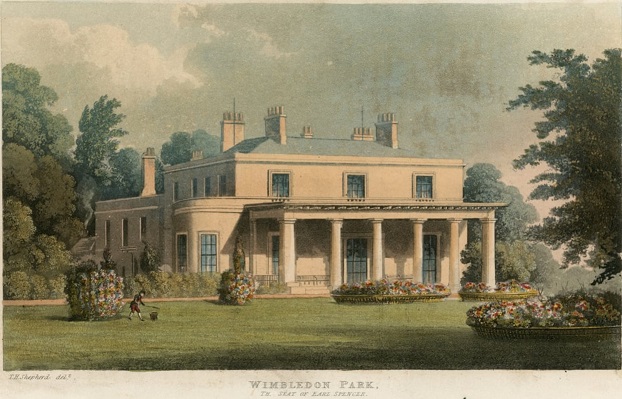 Figure 5. Wimbledon Park as seen in 1825.
Figure 5. Wimbledon Park as seen in 1825.
Saturday, the Road from Town leading to the charming Seat of Earl Spencer, in Wimbledon Park, exhibited a busy and an attractive spectacle. The number of magnificent carriages, each filled with Persons of Rank and Fashion going to partake of the hospitalities of Lord and Lady Spencer, appeared at one time almost beyond credibility. The preparations for this Noble Fete corresponded with the well-known taste of her Ladyship. 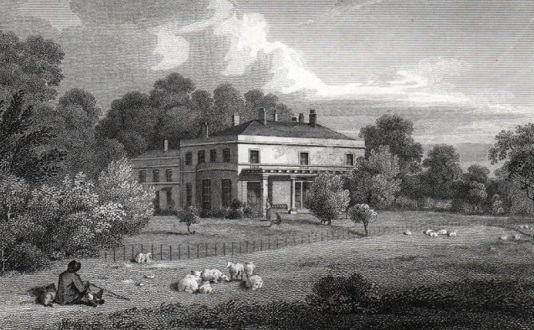 Figure 6. A second view of Wimbledon Park, c.1823, from J.P.Neale's Views of the Seats of Noblemen and Gentlemen.
Figure 6. A second view of Wimbledon Park, c.1823, from J.P.Neale's Views of the Seats of Noblemen and Gentlemen.
We read of the dancing that they danced a Country Dance to the tune of Tekeli, this is a tune that we have studied in a previous paper. The newspaper went on to list a long sequence of fashionables who were present at the event. In addition to the two Royal Dukes were six further Dukes, four Marquises, twenty-eight Earls, twelve Viscounts, twenty Lords... and so the list continued. Lady Sarah wrote of the event in her correspondence in a letter also dated July 6th 1807: I will attempt to describe all that happened on Saturday. The first question we all of us asked as soon as we waked was,Is it fair?as, after the agony we had suffered in watching thedoubling vapours sail along the skyand the weather grow more and more lowering as the day drew nearer, our anxiety was really beyond expression. For as we asked I fancy near eight hundred people, what could have been done with them indoors? The morning, however, was tolerable, but it began raining violently just as people began to come, at two o'clock. This, however, did us good; the rest of the day was warm, clear, and yet not too hot - in short, perfect. Very few people arrived before three, but when they did come it was the prettiest sight I ever saw, I think. The numbers of people dressed in brilliant colours, wandering about under trees and on the lawn and in the portico, the sound of the different bands of music, the extreme beauty of the place, which had put on its best looks, the profusion of roses and pinks in every part of the house and about it, and the sincere pleasure one saw in every countenance, made it quite a delightful thing. Every creature was, I believe, equally delighted with it; nobody left us till six or seven o'clock, and all were not gone till nine. Harriet and I went about for some time in vain, but at last with success, to make people dance. They did begin at about four; this added greatly to the beauty of the spectacle. While we were watching the country-dances on the west side of the house, the Duke of Cambridge and Lady Charlotte Campbell and two more people began waltzing on the other, to the great admiration of everybody. They all said it was a beautiful thing, they both danced so well, and the military band accompanied them so beautifully. I regret extremely not having seen this part of the fete. I don't think I can describe any details of dress to you; there was none very striking, but all looked excessively gay - pine, yellow, or lilac mantles or drapery over white gowns, and light straw hats or lace caps, were most the fashion. Some people looked very well, but several don't bear the daylight well, and one could hardly believe they were the same as one had admired at night. The equipages I refer you to the enclosed for an account of. I despair of doing them justice, particularly as the post is going. As so often with outdoor events, the British weather came close to spoiling things. Lady Sarah and her cousin Lady Harriet Cavendish (1785-1862) charmed the guests into dancing country dances. Meanwhile the Duke of Cambridge (1774-1850) (one of the Royal Dukes) danced waltzes on the other side of the building with Lady Charlotte Campbell (1775-1861).
Argyll Rooms, February 1808The Argyll Rooms opened in London in 1806, they were a popular venue for music and social dancing. Lady Sarah wrote a letter to her brother Robert on the 29th of February 1808 in which she revealed: 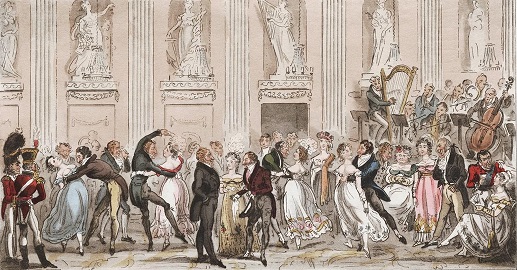 Figure 7. The Cyprian's Ball at the Argyle Rooms, 1825. Image courtesy of Yale University.
Figure 7. The Cyprian's Ball at the Argyle Rooms, 1825. Image courtesy of Yale University.
Mama and I are to go to the Argyle Street Assembly tonight. Vague hints are circulated that one shall have to dance there; I own I am quite old enough to have preferred walking about and talking; but, however, that isentre nous; no creature allows it possible or right not to be enthusiastically fond of being dragged up and down the middle, of figuring in and casting out like a parcel of mad idiots let loose, till you are dead, which event happens to me after getting down three couple in general. After all it is just possible that I may be a piteous partnerless person all night, so I need not be making all these pathetic lamentations before hand. Can this comment really have been from the same Lady Sarah who struggled to convince the company to partake of Country Dances six months earlier? Leading down a Country Dance genuinely could be a tiring endeavour. The leading couple was expected to dance to the bottom of the set, back to the top again, and potentially down a second time; if there were 15 to 20 couples in a set this would be a lot of energetic movement. The Morning Post newspaper for the 2nd of March 1808 reported on the same event at the Argyll Rooms. They wrote: Assembly Rooms had large spaces in which dancing could occur. At this Argyll Rooms event some 40 couples were reported to have danced; whereas the Spencer House ball above only saw about 30 couples dancing in two sets, and the Wimbledon Park ball had 24 couples. It's likely that the dancing at the Argyll Rooms involved two sets of 20 couples each.On Monday evening the second Assembly of the Subscribers to the above Institution took place, on which occasion a Grand Concert of Vocal and Instrumental Music, under the direction of Mr G.T. Smart, was performed. The Vocal Performers were Mrs Billington, Madame D'Aunary, and Signior and Madame Miarteni.
Two Assemblies in one night, 4th May 1808
A letter of Lady Sarah's dated simply 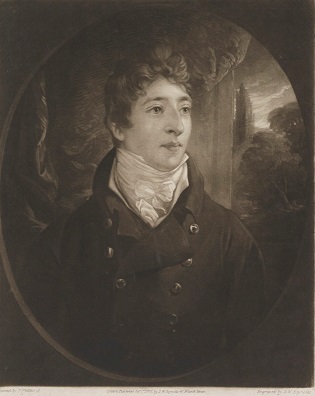 Figure 8. Lord Percy, the future Duke of Northumberland, depicted in 1806. Image courtesy of the National Portrait Gallery.
Figure 8. Lord Percy, the future Duke of Northumberland, depicted in 1806. Image courtesy of the National Portrait Gallery.
Several Further Events of May 1808
In a letter dated for the 11th of May 1808 Lady Sarah wrote of several events to her brother Robert. First she wrote of an Assembly held by Lady Cholmondeley (1764-1838) that she very much enjoyed: The letter then continues with a passage that was presumably written at a slightly later date that reads: This event was hosted by Mrs Robinson (1757-1830). At this event Lady Sarah danced first with Frederick Robinson (1782-1859), the son of the host and a friend of her older brother's, also a future Prime Minister of Britain. She then danced with Hugh Percy (1785-1847), who was evidently a desirable partner (see Figure 8). In this passage we see hints of how these types of society events were openly acknowledged to be about finding marriage partners, a young gentleman who was due to become a Duke was universally acknowledged to be a great dancer! The reference to his ancestorSaturday - Mrs Robinson's was a large, good ball. I danced four dances, the first two with Mr Robinson, Althorp's friend and a very good partner; and the last two with Lord Percy, who, being to be one day the Duke of Northumberland, is of course the best parter in London, by the unanimous consent of all the young ladies, who agree that he is the most charming, interesting, bewitching, fascinating youth that ever trod with the light fantastic toe the chalked floor of any ballroom in Europe since the days of his ancestor Hotspur, who I dare say was reckoned just as delightful by the high-minded, long-waisted dames of Henry the Fourth's Court. Whether I agree with them is another question; certain it is that I am as yet perfectly heart-whole and quite happy. We ate a very good supper, and then came home about three. Hotspuris presumably to Sir Henry Percy (1364-1403) who was nicknamed Harry Hotspur. I've not located any further accounts of this Ball (presuming it to have been held in May of 1808), we have written of two other balls held by Mrs Robinson in April of 1808 however. It's plausible that Lady Sarah was referring to one of those two events. They evidently danced Country Dances.
The Letter then continues with reference to yet another event: We know of at least one further event at which Lady Sarah danced this month, we've written about it in a previous paper. Sarah was reported to have opened the dancing at a ball held by Mrs Knox (1764-1839) along with her partner Mr Eden (1782-1810) (or possibly Earl Kinnoul (1785-1866) depending on which account is more correct). You can read more of that event here though it isn't mentioned in the published letters.
Three Masquerade Balls, 12th May 1808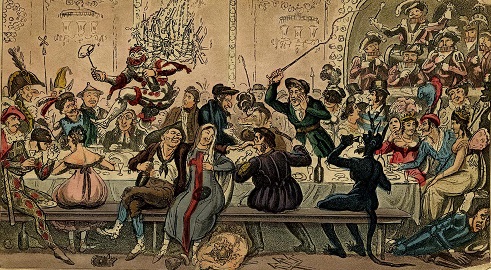 Figure 9. Tom & Jerry larking at the masquerade supper, at the opera house, 1820. Image courtesy of the British Museum.
Figure 9. Tom & Jerry larking at the masquerade supper, at the opera house, 1820. Image courtesy of the British Museum.
Lady Sarah's letter didn't end with Lady Essex's ball, she continued instead to reference three masquerade balls that she was disappointed to have missed. She wrote:
It wasn't unusual for multiple events to be hosted on the same evening in London and for guests to travel between them. Another diarist, Sir George Jackson (1785-1861) wrote of this same evening in his diary: Two of the masquerades resulted in descriptions being published in the London newspapers. The Morning Post newspaper for the 14th of May 1808 wrote of Mrs Orby Hunter's Masquerade that it was: Given on Thursday night, has created much conversation in the Fashionable World. Numerous were the applications made for tickets, even by strangers to the Lady, but, as this fete was given only to the intimate friends of Mrs Orby Hunter, many persons of rank were refused. The tickets not being transferable, the company was as select as could be wished. The preparations were in the most expensive style. The principal suite of rooms, on the drawing room floor (three in number), together with the Green Room, so called from its general appearance, were all tastefully fitted up. A kind of...atlee vert, or conservatory, was formed on the leads, leading from the drawing room to the Green Room; this was composed of laurel leaves, &c. and illuminated by variegated lamps. Two bands of music were provided; one of them was the Milanese Minstrels. About one o'clock the company exceeded 500 persons, possessing in rank, character, dress, and feature, infinite variety. A masquerade must always be a new scene, even without novelty of character to recommend it. Sometimes they have a theatrical appearance from the excess of dramatic characters, sometimes they assume a religious hue, from the overflow of Monks, Nuns, Priests, and Friars; the latter description predominated. The scene we are now attempting to describe might have been highly gratifying to the liveliest Parisian, to whom disguise is so natural, that a masquerade may be considered as a national fete. In the progress to perfection, we applaud the rule to exclude black dominos, which, however, was nearly fatal to a Gentleman at Mrs Orby Hunter's, who, in attempting to force an entrance, in that proscribed dress, was turned out, and rather roughly handled by the populace. Even the Duke of Sussex was refused admittance until it was ascertained that His Royal Highness had on a very dark purple domino, which was mistaken for a black one. From one o'clock until half past three, a constant succession of mirth and good humour prevailed. The supper succeeded, which was arranged at the side tables, in four rooms. The banquet was cold, but excellent; the wines were equally good. The time occupied in partaking of the refreshments filled up the vacant moments which the departure of night, and the arrival of the morning dawn, might have rendered dull. It was half past six o'clock before the company thought of retiring, and even then their departure was attended by evident signs of regret. Among the best supported characters, were the following:- 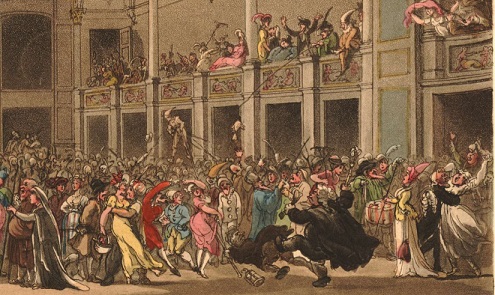 Figure 10. Detail from Pantheon Masquerade, 1818. Image courtesy of the British Museum.
Figure 10. Detail from Pantheon Masquerade, 1818. Image courtesy of the British Museum.
A long list of guests and what they wore was published (mostly omitted above) including a reference to Hartington himself, it was evidently this Masquerade that he and Ponsonby attended. A rule that was enforced at this event was that guests were not allowed to attend wearing a simple black domino (a small face mask). This almost resulted in the Duke of Sussex (1773-1843) being rejected, until the it was determined to consider his mask as being slightly off-black.. it wouldn't do to reject one of the Royal brothers from an event! It is perhaps worth noting that although a Masquerade involves a nominally anonymous attendance, the reality was that everybody knew who everybody else was. The newspapers could therefore print a detailed list of who wore what afterwards. The British Press newspaper for the 14th of May 1808 wrote of Mrs Panton's Masquerade that: Mrs Panton opened her elegant house, in Portland-place, on Thursday night, for the reception of a numerous company, which amounted to upwards of 600 Nobility and Fashionables. This lady's intention was not to give a regular masquerade, but to receive those that choose to come masked from Lady Keith and Mrs Orby Hunter, being nearly all the same visits. The arrangements for the evening displayed great taste and elegance; the staircase was lined with flowers, tastefully encircled and intermixed with musks, and lighted with variegated lamps, which had a very elegant effect. An orchestra, covered with evergreens, was formed in the second hall. Provost's Vauxhall Pandean Band, dressed in their full gala night's uniform, were placed in it and played with great taste the whole night. In the lower apartments, side tables were set out for refreshments; three spacious drawing-rooms were thrown open for the reception of the company, and were brilliantly lighted with Grecian diamond-cut glass lamps; in the ball-room was a large bronzed eliptic stand, with numerous or-molu branches, bearing lights. At ten o'clock the company began to assemble, and the greatest mirth prevailed. Dancing commenced in every apartment. During the evening, a dashing young man, dressed as a Knight-Errant, and not one of the invited guests, made his way into the rooms; when it was soon found that a...strangerhad presumed to mix in the company; on his being questioned, he could not give a satisfactory account, and was obliged to make a rapid retreat. The company continued to arrive until two o'clock. His Royal Highness the Price of Wales did not depart until a late hour. Once again there were long lists of guests printed that are not included above. This particular Masquerade evidently included some dancing, though we're not told what they danced. As with Mrs Orby Hunter's event, a prominent band were employed to play. We also have the anecdote of a stranger gaining admittance and having to be ejected. The Prince of Wales (1762-1830) himself attended this event!
Grosvenor and Camden Events, 2nd and 6th June 1808In a letter dated 2nd of June 1808 Lady Sarah wrote of two further events: 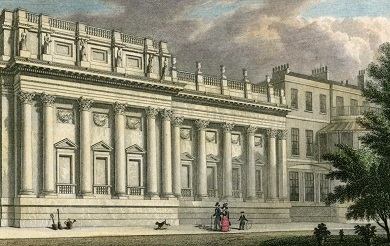 Figure 11 Grosvenor House depicted in 1828
Figure 11 Grosvenor House depicted in 1828
To-night we are going to an assembly which is to outshine all past assemblies since the days of old fashioned revelry as to splendour. Grosvenor House is to be thrown open to the world for the first time. It is said to be a mass of damask, velvet, gilding, statues, pictures, and magnificence of all sorts, beyond all powers of description or imagination, and has already, while only in prospect, the advantages of furnishing conversation in plenty to all the insipid misses and empty beaux I have seen for a long while. It is so small an expense of wit to sayAre you going to Lady Grosvenor's Thursday? They say it will be very fine,that everyone can afford it, and with the assaisonnement of a few pretty distortions of the features, or graceful twistings of the body, passes for a vastly brilliant sentence. Such are the merits of Lady Grosvenor in prospect; what they may be in recollection I reserve for to-morrow. My cousin, gives a ball Monday night, which I am delighted at; I quite long to dance a little... . She evidently looked forward to the assembly at Grosvenor House, home of the Earl of Grosvenor (1767-1845). The Earl had bought the property in 1805 and had spent a fortune on improving it, this event is likely to have been the first assembly held at the property in many years. And yet, despite the significance of the event to Lady Sarah, the newspapers seem barely to have noticed it. The only description of the event that I've found is from the Morning Herald newspaper for the 3rd of June 1808, they wrote: Lady Sarah ended her letter by referring a ball on the Monday night hosted by her cousin. The editor of the letters identified this cousin as being Lady Camden (c.1756-1829). Once again I've found no record of this ball in the newspapers, though balls were held by both the Duchess of Chandos and Lady Louisa Manners that same day (Morning Post, 8th of June 1808).
Lady Sarah did return to the subject of the Grosvenor House ball in a letter dated June 4th 1808, she wrote: It's unclear why the newspapers did not write copious praises about either the Grosvenor or Camden balls, perhaps nobody was available to sell them the gossip!
The Princess of Wales's Ball, 27th June 1808The next event to investigate is something a little unusual, it's a ball that the Spencer family were eager to avoid attending! The ball was held by Princess Caroline of Brunswick (1768-1821), the estranged wife of the Prince of Wales (and the future Queen). The Prince and Princess did not enjoy a happy marriage, though they did have a daughter together, Princess Charlotte (1796-1817). The royal couple had lived separately for many years, Caroline at Montagu House in Blackheath while the Prince was usually resident at Carlton House.
Rumours began to circulate that the Princess had taken lovers, her neighbour Lady Douglas was prominent in accusing her. The princess was particularly accused of having secretly given birth to a child in 1802, and having harboured the child under the guise of an adoption within her household. Anything that could interfere with matters of the Royal Succession were taken very seriously. A commission was established in 1806 to undertake the 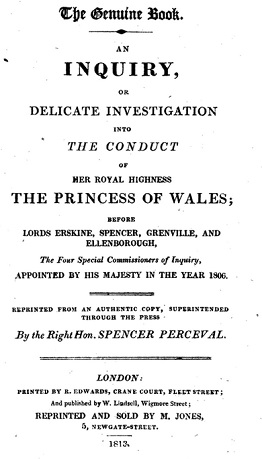 Figure 12 An Inquiry or Delicate Investigation, 1813.
Figure 12 An Inquiry or Delicate Investigation, 1813.
Lady Sarah wrote a letter to her brother Robert dated June 24th 1808: Two or three days since, we were all struck dumb with surprize by an invitation in due form from H.R.H. the Princess of Wales to us, to her ball on Monday, at Blackheath. For some minutes there was nothing but consternation; no good excuse to be found; going, quite impossible; and an immediate answer required. What was to be done? When suddenly it occurred to us that we had a pre-engagement (of how long standing we will not enquire) from Sunday to Tuesday morning, to my Grandmama at Holywell! This was pleaded as an excuse to the great Lady, and then we prepared to make good our words by writing to Grandmama to desire she wouldremindus of this old engagement of ours to her - in plain English that she would let us take refuge in her house, from the well-deserved storm of princessly rage a detected lie might produce. My Grandmama has agreed to take us in, as well as Hartington, who finds himself engaged to her from the same reason and in the same way, to pass Monday out of London safe and sound. Tuesday we adjourn to Wimbledon. I remember being rather sorry last summer when London broke up. But this year I have gone out so much and so long, I am really very glad, and though I certainly have liked dancing and such things better than ever this tear, I think I shall like quiet and country better than ever, too, which is very lucky, and very odd somehow. The family made their excuses and fled to Holywell House in Hertfordshire for a few days to stay with Lady Sarah's grandmother the dowager Countess Spencer (1737-1814). The ball went ahead without them, the British Press newspaper for the 28th of June 1808 wrote of it: Her Royal Highness the Princess of Wales gave a grand Ball and Supper, last night, at Blackheath. The preparations for the evening displayed the greatest magnificence. On the outside was stationed a guard, to keep off the spectators. The grand entrance, which is in front of the Heath, was lighted by circles of lamps; it leads to the grand Chinese hall. The saloon was most superbly lighted by diamond Grecian lamps. In this apartment Her Royal Highness, her Royal Mother, and the Countess of Mountnorris, sat to receive the company. The grand Gothic hall is a most superb apartment; the ceiling is formed in arches, and painted in the Gothic style; the draperies and curtains are of crimson velvet, richly embroidered with gold, by her Royal Highness; from each arch was suspended large diamond-cut glass lamps; the most valuable paintings are placed round this apartment, in which was a table for forty persons, decorated in the most splendid style; in the centre was a large gold vase filled with the most delicate flowers; there were also some small antique gold vases on different parts of the table. Three other rooms were appropriated for supper, and displayed the greatest mangnificence. On the eastern side of the house is an octagon room, the angles of which are of plate glass. The ceiling represents an evening sky, and forms a dome, from which is suspended a magnificent diamond-cut glass chandelier; the carpet is of velvet to correspond with the curtains and draperies; the service was of gilt china, richly burnished. Three other rooms were set out in the same style of elegance. A long avenue, which leads to the Duchess of Brunswick's house, was also brilliantly lighted. In her Grace's house, was a room set out for three hundred and fifty persons, and decorated with the most sumptuous and elegant ornaments. A temporary grotto was fitted up for dancing, in a romantic style; it was formed in arches and avenues of evergreens, intermixed with flowers, and lighted with variegated lamps. The several avenues in the grotto were sufficient to accommodate two hundred couples for dancing. To the right of the grotto was a little grove, lighed with variegated lamps, representing a crown. The lawn was lighted round with variegated lamps. In the centre of the lawn arrangements were made for a most brilliant display of fire-works. Two bands were placed on the lawn, who played the most favourite airs. The company began to assemble at eight o'clock, and continued to arrive, without intermission, until twelve, when supper was announced by the fireworks. The Spencers may have been keen to avoid the invitation but there was evidently a full house of other fashionables present.
Of Cotillons and Dancing MastersLady Sarah wrote in a letter of late June 1808 of the experiences of her cousin Lord Hartington (1790-1858). Prior to their escape to Holywell he had been in London learning to dance Cotillons. Lady Sarah wrote: 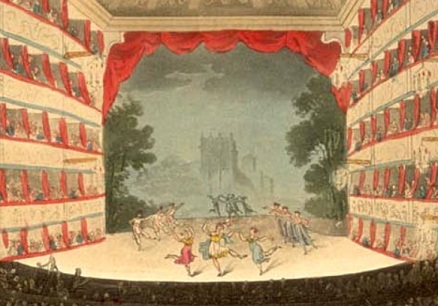 Figure 13 The stage at the King's Theatre in 1809. Image courtesy of Wikimedia Commons. Some of the boxes have a clear view behind the scenes.
Figure 13 The stage at the King's Theatre in 1809. Image courtesy of Wikimedia Commons. Some of the boxes have a clear view behind the scenes.
We've written and speculated about the renewed interest in Cotillion dancing in 1808 in a previous paper. It's possible that the French Country Dances that the fashionable world were enjoying in 1808 were the first wave of what would eventually become known as Quadrille dances, the Quadrilles were extensively danced in Britain from 1816. Hartington was the son of the Duchess of Devonshire (1757-1806) and she (along with her circle of friends) had been particularly associated with a new style of Cotillion dancing from around 1803. Lady Sarah's letter continued:Nobody is here besides ourselves but Hartington, who has a cold, and is deafer than ever I saw him yet. He has been lately engaged in London with several other fine gentlemen and ladies, practicing French cotillons, with which they favour the world at every ball that is given now. I never have seen them danced, but I fancy the figurantes at the Opera beat them all to nothing. It has an advantage of being an incomparable excuse for idleness in the morning as well as evening, and then, when they are to be performed, it is a valuable opportunity for fine ladies to produce all their long-forgotten store of shyness, coyness, modesty, humility, and such-like virtues, which in this time of the world have at least the merit of novelty to attract attention by. I wish you had been in our box at the Opera t'other night. Hartington, who was sitting by me and opposite the stage, had just told us how hard he had worked all the morning, making steps and attitudes, holding both M. Deshayes' hands for the cotillon that night, when, lo and behold! M. Deshaynes himself appeared, opposite to us, behind the scenes, en turban bleu celeste and argent, petit jupon de gaze d'argent, and flesh-coloured shoulders and knees, prepared for entering the stage as Almanzor. What do you think this gentleman had the assurance to to? He espied Hartington, and with all the ease of a very old college friend, gave him a nod and smile, and did something very like kissing his hand to him. Hartington's deep blush of indignation, and drawing back of his whole person instead of bowing, and his deliberate Cavendish way of sayingAunt, don't you think he was very impertinent?were all most entertaining contrasts to the reception Deshaynes, I suppose, expected his nod would meet with; and I should hope it will not be tried again. But such little adventures are of course necessary consequences of the cotillon system, and amuse me extremely. Andre Deshayes (1777-1846) was a principal dancer at the King's Theatre Italian Opera House in London from 1804. He was also available for hire to teach dancing to the aristocracy, he had evidently been employed by Hartington and his friends to teach them the new Cotillons. Deshaynes appeared on stage as the character of Almazor from Constance and Almanzor (by Mr D'Egville) in a performance on the 19th of May 1808, it is likely that the anecdote dates to that evening. The celebrated dancer greeted the young Lord in an overly familiar fashion, offending Hartington's sense of propriety. Such things, Lady Sarah mused, are the inevitable result of the Cotillon system of dancing - that is, the system of dancing that requires rehearsals with a professional prior to performing the dances in public.
The Countess of Spencer's Dejeune, 2nd July 1808
The Spencers held their annual Dejeune (or Breakfast) at their Wimbledon property on the 2nd of July 1808. Lady Sarah wrote of the preparations in a letter that: Several newspapers wrote of the event, the Morning Herald for the 4th of July 1808 wrote:  Figure 14 Le Bal Champetre, Image courtesy of the NYPL.
Figure 14 Le Bal Champetre, Image courtesy of the NYPL.
On Saturday the whole fashionable world rendezvoused at the delightful villa at Wimbledon, by cards of invitation, to the Rural Breakfast given by the Countess Spencer. Nearly 2000 persons of the first distinction were assembled by two o'clock. Six superb tents,...a la turque, and also several minor ones, were erected in various parts of the gardens, in which this delightful repas was served. The walks leading to them were decorated with beautiful exotics, flowering shrubs, &c. forming treillages, and festoons of the most tasteful kinds. Bands of music were stationed in different openings of the lawn, where Country Dances and Scotch Reels commenced about three o'clock, and continued till near seven, when the Company began to retire. The fineness of the day, and the rural employment of haymaking in the adjacent grounds, added much to the general brilliance of this enchanting scene. The Ladies' dresses were principally white muslins, trimmed with lace, silk hats of sky blue, green, lilac, and straw colours, decorated with flowers and lace, and some chip gipsy hats, with wreaths of flowers. The major part of the delighted visitants did not return to town much before eight o'clock. Among the Company were the following Nobility and Gentry:- A long of list additional guests were mentioned. The Oracle newspaper for the 4th of July 1808 added some further details: The preparations were in the most princely and costly manner. In the house four apartments were prepared for the accommodation of part of the Company; one in particular was set apart for his Royal Highness the Prince of Wales and Party. On the left of the house, on the lawn, was pitched a large marquee for about sixty, near which was stationed the Band of His Royal Highness the Duke of Cambridge, who performed martial and other music during the day. At the extremity of the lawn, opposite the house, was erected a very large and elegant platform, where the younger part of the visitors danced; on various parts of the lawn and plantations were erected fourteen marquees, where covers were laid for nearly one thousand. The repast consisted of every delicacy that could be thought of, and that in profusion; the fruits were all the choicest quality, consisting of pines, grapes, ices, &c.; about seven o'clock, tea,coffee, and other refreshments were served in the different marquees. It was nearly ten before the numerous visitors, with reluctance, ordered their carriages for Town. The construction of a platform for dancing is an interesting detail, they were not dancing directly on the grass. The Northampton Mercury newspaper for the 9th of July 1808 offered the following about the event: For magnificence, taste, and liberality, this fete-champetre was unrivalled. The breakfast was provided for eight hundred persons to partake of, but the company far exceeded that number. The military Band belonging to the Coldstream regiment of Guards attended, and played martial airs and soft music. The breakfast commenced about five o'clock; previous to which, the company promenaded the pleasure ground. A dinner was provided for such as chose to stop, which a great many of the company did; the entertainments finished with dancing. The carriages, when in waiting, were so numerous as to extend in a double rank quite across Wimbledon Common. Many Ladies were under the necessity of walking a mile and upwards before they could get to their coaches; and many were obliged to return to town on one another's vehicles, from the absolute impossibility of finding their own in the aggregate mass. It was evidently a well attended event! Lady Sarah wrote a more personal account of the event to her grandmother in a letter dated July 6th 1808: I fancy there must have been 1500 at least, and all in the highest spirits, and good-humour and gay dresses and pretty looks. I never saw so lively a scene as it was about six o;clock; till then they were not all arrived, and did not finish going till near ten, having danced till it was too dark to distinguish features. The Prince was not able to come, being busy settling the Duke of Sussex's affairs, who is head over heels in debt, and whose carriage was stopped some time back byofficers of the street of Bow, as some Frenchman called them. The Duchess of York was there, and quite delighted; she took moreover much better care of herself than Mama expected, and was very little trouble, walking about with her suite. The Dukes of Cambridge and Gloucester were the only English Royalties we had besides her. Monsieur and his people were very civil, and bowed and complimented sufficiently. As to the Spaniards, they certainly thought but little of the conspiracy, but ate, drank, and enjoyed themselves all day: Lord Holland took care of them. One of them, Andrea de la Vega, I think a very handsome man, but that you may not be too much alarmed for my peace of mind, I must add that to distinguish him from the rest I could find no way but calling himpar excellencethe green one; the others as horrid. I did not dance at all, as I knew I should be half dead with only walking about. Hartington of course was one of the very best dancers; his partners were Lady Augusta Greville, Lady William Bentinck, and Miss Wyndham. Several people told me they understood the fete was given to declare publicly his certainly intending marriage with the former of these ladies: which proves the industry of report-mongers is all alive still. I can think of no more anecdotes, dear Grandmama. The handsome Spaniard that Lady Sarah took a liking to was Andrés Ángel de la Vega (c.1768-1813), an envoy from Spain. And contrary to the gossip, Hartington did not marry Lady Augusta Greville (1745-1845), in fact he never married at all.
ConclusionLady Sarah's published correspondence after the Spencer Dejeune of 1808 rarely refers to dancing, we will therefore leave the investigation there. She would go on to marry Sir William Henry Lyttelton (1782-1837) in 1813. Her correspondence offers fascinating glimpses into the life of a privileged socialite, we gain a brief insight into the private thoughts of someone who attended the grand society balls of the early 19th century. We learn very little of the dancing itself of course, yet we do discover something of how such events were organised. If you'd like to read the letters for yourself you can find them in the 1912 Correspondence of Sarah Spencer, Lady Lyttelton, 1787-1870 as edited by Her Great-Granddaughter, the Hon Mrs Hugh Wyndham, a copy of which is available on-line courtesy of the Hathi Trust. If you have anything to add to this investigation do please Contact Us as we'd love to know more.
|
Copyright © RegencyDances.org 2010-2025
All Rights Reserved